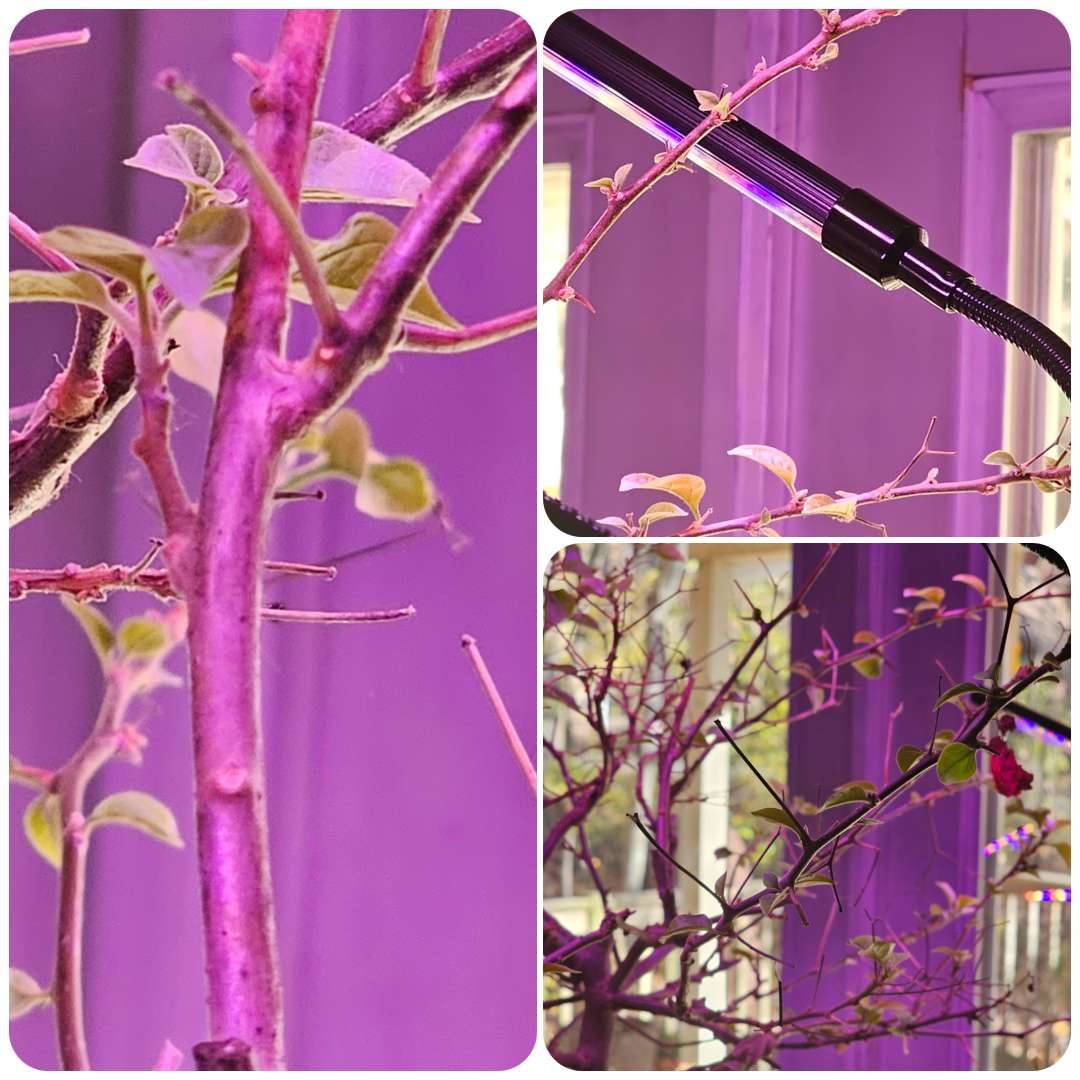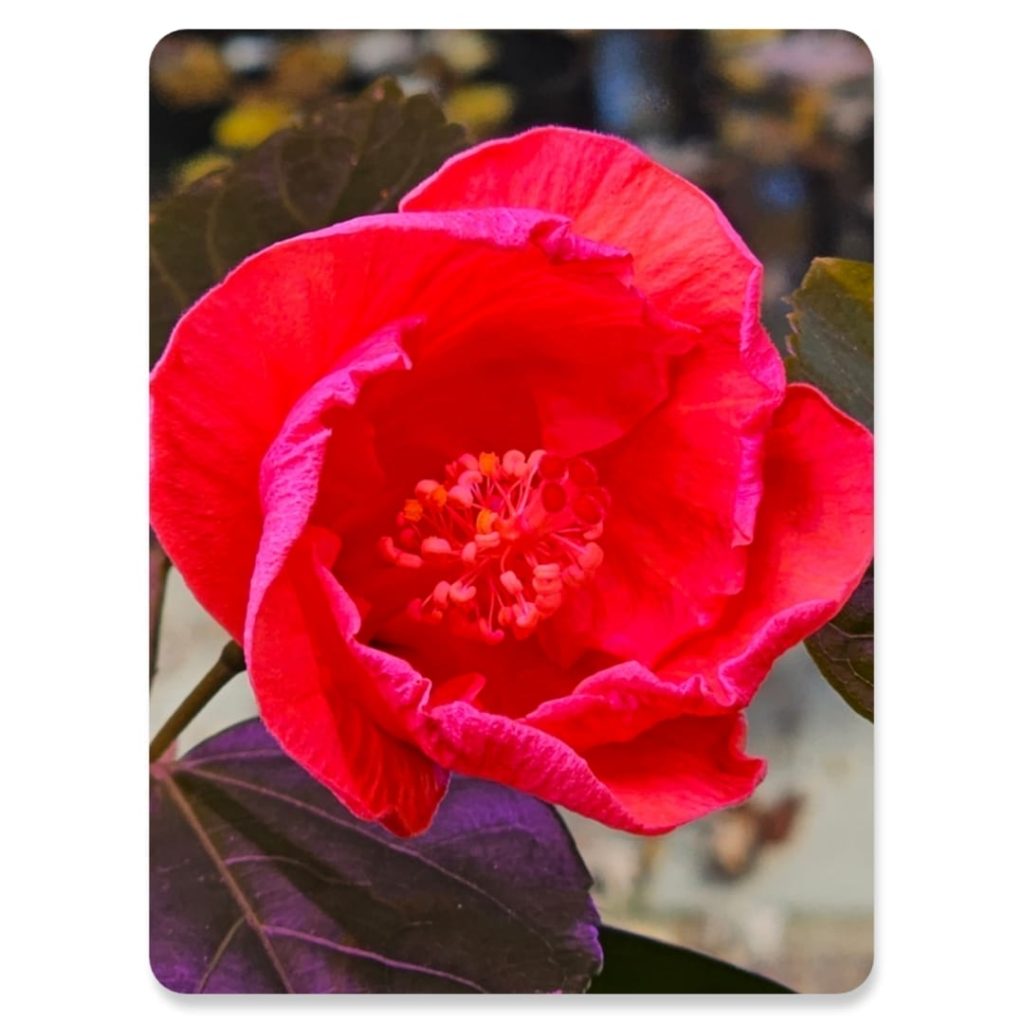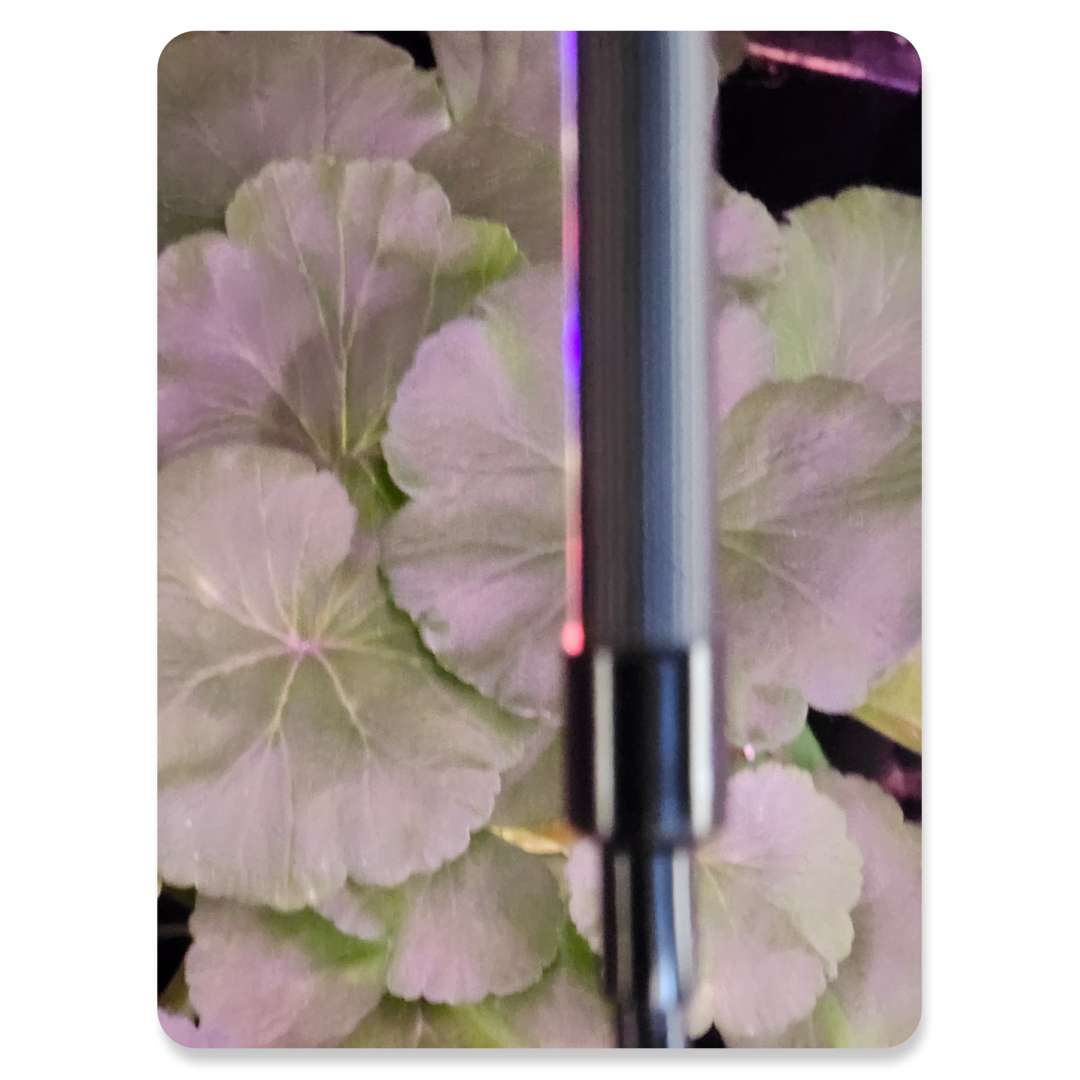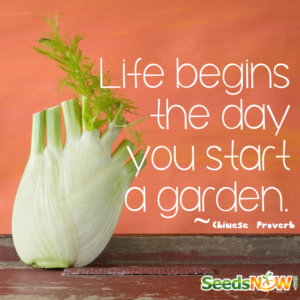Help Your Tropical Plants Recover from Relocation Shock
Plants can go into shock just as animals do. Plant shock resulting from relocation is really a thing, and it happens frequently to tropical plants, or those that are hardy only down to zone 9 or above, that are moved indoors after spending all summer out on the patio. The effects of plant relocation shock can definitely be alarming to see, and potentially deadly to the plants. Read on to learn what I do to minimize those effects and help my erstwhile outdoor tropicals make the transition to life indoors.
By John G. Stamos
Table of Contents
Introduction
Greetings, gang. I’ve got some info for you today about a plant crisis that, although amazingly common and widespread, hadn’t ever really been on my radar as a potential RGG article topic. But a number of curious RGG readers and subscribers, after seeing photos of my tropical plants here in the RGG’s relatively new “Houseplants, Succulents, and Tropicals” image gallery, have recently been asking me specifically about this crisis. The crisis I’m referring to is plant shock resulting from relocation, which, for the purposes of this article, is a tropical plant’s sometimes alarming (and very serious) negative reaction to being moved from the great outdoors to the less than great indoors. “Do your tropicals suffer from plant shock when you relocate them to the indoors for the winter?” is what I’ve been reading frequently in the RGG “Contact Me” forms I’ve been getting lately. That question, to which my answer is a definite “Yes,” is what got me moving on this article.
So, here’s how this one’s going down: First, I’ll give you a rundown on the types of plants (at least in terms of the population that I grow) that are most susceptible to plant shock when they’re moved indoors. Next, I’ll describe some of plant relocation shock’s most notable symptoms. Then I’ll tell you what I’ve found to be some definite primary causes of this s.o.b of a problem. Finally, I’ll tell you what I do to mitigate the issue and I’ll recommend a product which I literally – and very seriously – classify as a “Miracle Cure.” Of course, scattered intermittently through my scrawling will be some pics, which you may find helpful. Here you go…
Which Plants are Most Susceptible to Plant Relocation Shock?
Since I grow a fairly wide range of potted plants, I think I’ve identified a decent population sample that seems to be most susceptible to plant relocation shock. My own plants that are acutely and dramatically affected by the move from outside to inside are three extremely sunlight-needy tropicals: my hibiscus, my bougainvillea, and my three mandevilla vines. These plants are not traditionally grown as houseplants – they’re essentially tender perennials that grow year-round outdoors in hardiness zones 9 or above. When growing outdoors year-round, these plants will enter a period of dormancy during the coolest (and sunlight-poorest) months of the year, and they’ll rebound when warm weather and higher-quality sunlight returns. Since these plants haven’t been specifically cultivated as houseplants, they seem to have a tougher time migrating to the inside of my house after a long summer of outdoor sun, heat, and humidity than those members of my potted population that have been cultivated for decades specifically as houseplants. My dragon trees, elephant ear, Norfolk pine, etc. (which, not coincidentally, don’t require quite as much sunlight as my shock-stricken individuals), for example, make the move indoors with minimal drama. Even geraniums of the genus Pelargonium (not to be confused with the often cold-hardier plants of the genus Geranium) which are often grown as outdoor annuals in colder hardiness zones, have got enough traditional houseplant pedigree in their history to make them awesome year-round potted plants that can spend summers outside and winters inside with equal aplomb. These plants are perfectly happy growing indoors year-round, and are generally pretty adept at handling the environmental transitions that can result in relocation-related plant shock in less adaptable individuals.
I’m definitely no botanist, but I’ve dropped a bunch of dough on all sorts of plants over the years – perennials, annuals, bushes, trees, tropicals, succulents – you name it, and I’ve watched some thrive and I’ve watched some bomb. When it comes to the biological traits of the plants I’m discussing in this article, my science might not be 100% razor-sharp, but my observations definitely are. I know what works and what doesn’t work for my green and leafy crew.
Symptoms of Plant Relocation Shock
When my hibiscus, bougainvillea, and mandevilla tropical plants go into plant relocation shock, the first and most obvious signs are yellowing, withering, and dropping of their leaves, and, as In the case of my mandevillas, even the extremities of their stems can wither and die. You’ll recognize these signs as soon as you see them. They’re unmistakable. Your plants, at this point, are making it obvious that they’re unhappy. What you do next can determine whether your plants in shock will pull out of it, or perish.
Causes of Plant Relocation Shock
In the case of my plants, it’s changes in two primary environmental conditions that initiate the drama of plant relocation shock: sunlight and humidity levels. Obviously, plants need sunlight. It’s how they feed themselves. Through the process of photosynthesis, those green, chlorophyl-laden leaves manufacture food and energy for the plant by harnessing the awesome power of the sun. Light wavelengths in the 400 -700 nanometer range are those most responsible for delivering food and energy to growing plants. Because I can’t always locate my potted plants close enough to a window (this is a common lament among RGG readers), and because the actual composition and quality of the sunlight itself changes with the seasons (and that supply of 400-700 nm isn’t quite as plentiful during the fall and winter), sun-loving tropicals like my hibiscus, bougainvillea, and mandevillas can really suffer. A change in humidity levels is the second factor that can acutely compromise a plant’s well-being. The average wintertime relative humidity levels in a typical Midwest home range between 15% and 45% (furnace systems – particularly those involving a forced air heating method – are notorious for drying out the air in a dwelling). Since a lot of plants require relative humidity levels substantially higher than 45%, it’s not hard to put two and two together and realize that when a humidity-craving plant is moved abruptly from the comparatively humid outdoors (summer daytime humidity in Indiana, for example, is nearly 90%) to the low-humidity environment of the interior of your heated, wintertime house, something’s gotta give.
Fixes for, and Prevention of, Plant Relocation Shock
Initiate dormancy. You can completely short circuit the problem of moving-related plant shock by sending your former outdoor residents into dormancy once you bring them indoors. Depending on the plant, initiating dormancy can be a fairly simple process. Subjecting potted plants to constant and sustained dark, dry, cool conditions, or uprooting plants and storing them in bareroot form under similar conditions will usually do the trick. I do this with only a few of my plants. A notable example is my salvia ‘Mystic Spires Blue,’ which will spend its winter as an indoor potted, garaged, dormant perennial. Incidentally, this plant has got a history with more plot twists than an Agatha Christie mystery. Click this link to read about its more recent adventures (and find more links in that article to learn its whole story). Pretty interesting. Again, I generally don’t do this. I like to keep my non-hardy plants with me throughout the winter.
Maintain a regular watering schedule. This doesn’t mean watering the shit out of your plants. Flooding them and creating a soupy, soggy mess for their root systems to deal with will definitely make the relocation plant shock crisis worse, and will probably ultimately kill the plants. Instead, by giving all your plants who’ve spent the summer outdoors a solid watering when they first make the move to the inside, and keeping their soil evenly moist by regular, judicious watering, you’ll mitigate, to some extent, serious plant relocation shock. Giving a plant’s roots something to do – namely drinking – literally helps the plant take its mind off the stress of its relocation. I’m serious about this. There’s actual science behind this phenomenon, but I prefer the personification approach and attribute thoughts and emotions to each of the members of my plant tribe. (Yeah, I know… I’m an idiot.) But seriously, don’t overwater or your plan will backfire.
Maintain humidity for those who crave it most. One of the easiest ways to make sure that conditions in your dry, heated wintertime home remain plant-friendly is by misting your plants’ leaves with tepid water on a regular to semi-regular basis. I recommend researching each of your plant’s humidity requirements before proceeding with this methodology. While regular misting (once a day) works beautifully for my hibiscus, bougainvillea, and mandevillas, plants like my dragon trees, elephant ear, and peace lily, and all of my succulents, require no wintertime misting at all. Don’t hose ‘em down without researching first!
Let there be light! For my wintertime indoor plant-growing scene, this is easily the most critically important element in my plant relocation shock-mitigation process. At the very least, the provision of the proper light levels for my suffering, sunlight-loving tropicals has the most noticeable effect on their health and appearance. This being said, the question of how you can deliver adequate light to your own shell-shocked plants looms large. Remember, most plants need light in the 400-700 nanometer wavelength range in order to successfully engage in photosynthesis and ultimately survive and thrive. Due to a number of factors, including the changing angle of incidence of sunlight (essentially, the position of the earth relative to the sun) throughout the fall and winter, and the presence of wintertime light-diffusing atmospheric particulate (frozen moisture particles), quality, photo-synthesis-friendly, wintertime light can be extremely scarce. Add to this the fact that it may not always be possible to locate a potted plant directly in front of a window that lets in a lot of light. For plants like my shock-sensitive hibiscus, bougainvillea, and mandevillas, this can be a real problem. On the other hand, plants like my dragon trees, for example, which belong to a genus that finds the origin and natural habitat of many of its species among dense jungles under extensive tree canopies, and which has been cultivated successfully as an indoor plant by the perpetuation and accentuating of these growth habits, light requirements can be comparatively minimal. But the upshot is that all plants living indoors over the course of a frigid winter require sunlight – some a lot more than others. So, again, how do you get it to them?
The Solution to the Sunlight Problem
This one’s a no-brainer: The solution for getting the right light to your plants (plant shock victims or otherwise) is a grow light, or grow lights. Plainly stated, a grow light – a device designed to deliver light of the proper wavelength from within the visible spectrum, which, as we learned earlier, is between 400 and 700 nanometers – is the way to bring almost perfectly simulated sunlight to your indoor plant shock sufferers. The cool thing about any really good grow light is that it’s designed to deliver light primarily from within the proper range as referenced above. Although a good grow light is capable of delivering light from within the entire range of the visible spectrum (380nm-780nm), this type of lighting doesn’t waste a lot of energy by casting a whole bunch of unnecessary, and often annoying, ambient light from useless parts of the spectrum. Instead, a good grow light will primarily deliver light from within the good plant-growing range – 400nm-700nm. And the best kind of grow lights? Another no-brainer: LED grow lights. Light emitting diode technology offers huge advantages over traditional fluorescent grow lights. Among the more notable of these are the fact that grow lights that use LED technology – at least the better ones – can be adjusted to deliver light only from specific ranges of the spectrum that are most beneficial to plants, or can be adjusted to additionally include light from other ranges from within the spectrum (like warm white light which can approximate the warmth of sunlight). Another advantage to LED grow lights is the fact that the cost to operate them is comparatively low. The amount of electrical current required to energize even substantially large arrays of individual LED bulbs is minimal.
But the biggest no-brainer of this whole grow light discussion, from my point of view, was figuring out which grow light best fits the bill. There are a few criteria I used to figure out which grow light would work best for me.
- Light spectrum adjustability. I wanted to ensure that my indoor plants got the awesome sunlight-duplicating effects of light from within the 400nm-700nm range. This specific light falls in the blue and red ranges. But I also wanted to be able to periodically deliver warm white light (3,000k) to my plants that generates ambient warmth and approximates the “feel” of warm sunlight on their leaves and stems.
- Height and reach adjustability. The grow light unit I was aiming for also needed to be fully adjustable, not only in terms of height, but also in terms of reach and lamp head positioning. These requirements were critical because some of my tropicals are not only tall, but wide-ranging, as well. I knew I’d have to be able to easily move the specific light source(s) – namely, the lamp heads themselves – around to accommodate the changing reach of my plants.
- Portability. I knew I’d want to easily locate my grow light to within reasonable proximity of my plant shock victims, and I knew I’d want to be able to easily move the fixture around whenever I wanted. I knew I definitely did not want a grow light unit that clamps onto the edge of a tabletop, or is permanently affixed to a wall or ceiling.
- Ease of use and convenience. I wanted a grow light fixture that was simple to operate and really convenient to use. I wanted that artificial sunlight to be delivered automatically, and turned off automatically. I wanted to be able to easily select light from specific ranges, or all ranges, of the visible spectrum. I wanted to be able to easily adjust the brightness of the lamps. I also thought a remote control unit would be exceedingly cool.
- Ease of assembly and placement. Since the NFL season is in full swing, I didn’t want to spend a whole bunch of time screwing around trying to put my grow light together. (Self-starting go-getters like me never want to leave the couch and run the risk of missing a kick-off and a plate of nachos.) So yeah, I wanted to make sure that whatever grow light I bought would go together quickly and easily, so I could get back to the things in life that really matter. And once assembled, I wanted to be able to put it wherever I wanted (mainly, anywhere not in front of the TV).
- Minimal storage space. Once warm weather returns, and my rejuvenated plant shock victims go back out onto the deck, I want to be able to stowe my grow light so it doesn’t take up much space.
The Perfect Grow Light: A True Miracle Cure for Plant Relocation Shock
This is it. This is the product that meets all of the above criteria, and has pulled all of my plant shock-suffering tropicals out of their individual nosedives. And it’s the growlight I wholeheartedly and enthusiastically recommend to my fellow plant fanciers who also face the heartbreak of plant relocation shock. Seriously, guys, this product is the balls. Read on to check it out.
No-name greatness. My grow light does not come with a big name. It’s a good thing that I ordered it from Amazon based on the number of excellent product reviews it’s received, and not based on name recognition, because, like I said, it ain’t got any. The manufacturer is Lxyoug, which, in my world, is pretty much a no-name brand. And that’s fine with me. I wanted a grow light that would perform beautifully, and meet all of my expectations, and I didn’t want to pay more for a lesser product with a big name. This Lxyoug grow light is the single biggest reason my plants have successfully and consistently pulled out of plant shock and have rebounded beautifully. Check out the pics below to see this thing in action.

As far as meeting all of my requisite criteria is concerned, this Lxyoug grow light did, and it exceeded my expectations, as well. This unit – and I own four (hey, I’ve got a lot of plants) – has brought all of my plant shock sufferers back to green, growing health in perfect, better-than-expected fashion. Once I turned these things on, I noticed improvements to my plant shock victims within 48 hours, and in some cases, in 24 hours. This product is absolutely amazing. In terms of its illuminating capabilities, it’s absolutely perfect, and in terms of its practicality, flexibility, and applicability, it simply can’t be beat. Let’s look at how it scored on my criteria report card.
- Light spectrum adjustability: A+. The Lxyoug LED grow light offers 3 light settings: 1) Warm white (3,000k wave number), 2) Blue spectrum (460nm peak) and red spectrum (660nm peak), and 3) Combination warm white and blue/red spectrum (380nm-780nm). I alternate between setting 2 and setting 3. Plus, there are 10 different brightness settings to choose from from 10% to 100%. My plants love the illumination they’re getting from this grow light and are literally sprouting like weeds.
- Height and reach adjustability: A+ The stand/tripod combo allow for heights to vary between 15″ and 60″. And this does not include the additional reach provided by the universally flexible arms that support those amazing LED light heads. You can potentially illuminate foliage substantially over 6′ above floor level. Those flexible arms allow an almost limitless positioning of the light heads and guarantee that you can provide that awesome light range in spots where it’s needed most.
- Portability: A+ You can literally put this thing wherever you need it most. Its adjustable tripod base can be set in virtually any position between wide and flat, and narrow and tall. The entire unit itself is incredibly lightweight and entirely accommodating. Pick it up and move it with one hand, and put it wherever the hell you want. Seriously.
- Ease of use and convenience: A+ This remarkable unit offers unparalleled, state-of-the-art control and convenience. With a push of a button, you can switch from one light spectrum range to another, adjust brightness, and set a timer for either 4, 8, or 12 hour periods of light delivery. Even better, the football-watching, junk food-eating, couch-reclining, lazy s.o.b. that I am really appreciates the remote control unit that comes standard with these grow lights. (The TV remote isn’t the only remote with Cheetos stains on the buttons.)
- Ease of assembly and placement: A+ Each of these units comes delivered in a relatively small box, and arrives separated into two main components (plus the AC transformer/adaptor and the remote control device). It takes about 30 seconds to put one of these units together. And I am living proof that one need not be terribly bright to accomplish this. Simple assembly. No doubt about it.
- Minimal storage space: A+ Take the thing apart, fold it up, put it back in the little box it came in, stick it on a shelf in the garage, and forget about it ’til you need it again next fall. You’ve got bigger things to worry about now. Like baseball season.
See the pics below to appreciate the simplicity and effectiveness of these amazing LED grow light units.
The following six images demonstrate beautifully the effects that these grow lights have had on my plant shock victims. Every one of them has rebounded beautifully after initially dropping leaves and withering.
The Lxyoug fully adjustable, full spectrum LED grow light has proven to be THE miracle cure for all of my tropical plants suffering from plant relocation shock. Its flexibility, capability, convenience, and proven effectiveness make this grow light an absolute must-have. It has definitely shown itself to be the effective solution that I’d hoped for. I simply can’t say enough about the effectiveness of this product, and I am pleased to wholeheartedly recommend it. Please click the #advertisement link to learn more, or to order it here, directly from Amazon.
The Plant Relocation Shock Wrap-up
The proper amount of the right kind of light is the answer here, gang. Of course, regular watering and maintaining proper humidity levels are super important for mitigating your leafy chums’ plant shock due to their relocation indoors. And you can definitely take the wheels off the plant relocation shock train entirely by initiating your plants’ dormancy. But for me, keeping my sun-loving tropical plants in my living space throughout the fall, winter, and early spring – which is really important for me (no dormancy in the garage for my plants, thank you) – and making sure that they not only snap out of their stupor when they first come inside, but that they stay happy and healthy until it’s time for them to return to the great outdoors, is most heavily contingent on proper light levels. Ample light from within the correct, photosynthesis-friendly ranges of the spectrum is critical, and my Lxyoug Full Spectrum Grow Lights make sure that my overwintering plants get it.
Bibliography/For Further Reading
For those of you with further interest in the topic of plant relocation shock, or any of the subtopics referenced in this article, please see the following reading list/bibliography. I used a number of these sources in my research for this article.
“The Meaning of ‘k'” Questions and Answers in MRI
“Humidity Tips: How to Keep Your Houseplants Happy” Greater Des Moines Botanical Garden
“How Humidity Affects the Growth of Plants” Polygon
“What Are the Best Light Sources for Photosynthesis?” Vernier Science Education
“Optical Properties of Ice and Snow” by Stephen G. Warren The Royal Society Publishing
“Light, Color, and Atmospheric Optics” University of Washington
That’s all I’ve got, folks. Thanks for sticking around. I hope the info in this one was interesting and helpful, and I hope you at least partially enjoyed reading it. As always, your interest and readership are dearly appreciated.
Cheers, and Happy Gardening!
The Renaissance Garden Guy is a participant in the Amazon Associates Program. As an Amazon Associate, The Renaissance Garden Guy earns from qualifying purchases.
Additionally, The Renaissance Garden Guy is a participant in the Bluehost, SeedsNow, and hosting.com (formerly A2 Hosting) affiliate programs. The Renaissance Garden Guy earns a fee/commission each time a visitor clicks on an ad or banner in this site from one of these companies and makes a subsequent qualifying purchase.
Please click here to view The Renaissance Garden Guy Disclosure page.



























I have seen these lights in action. They really do a great job of giving tropical plants the light they need to make it through winter. Thanks for bringing these great lights to our attention.
Thank you for reading the article, Kevin, and thank you for your thoughts on this product and my methodology. Yes, this is an amazing product. It’s particularly useful for people who don’t have a greenhouse, or grow room, or arboretum. I grow my houseplants and tropicals in my living room, and the versatility/flexibility/effectiveness of these particular LED units is absolutely astounding. As I wrote in the article, they literally saved my shocked plants. Thanks again, Kevin!
Absolutely a gem… so well written, so much information, so much to learn …. Amazing article 🙏🌺
Thank you, Roxxy – I really appreciate that! I’m so glad you’ve enjoyed reading about my plant shock cure. Really, Roxxy, anyone who owns and loves their indoor or tropical plants can really help them out with this particular LED fixture. It can be really tough on these types of plants to make the move indoors after being out in the sunshine for several months. I hate to see any plants suffer, and I hope this article will save more than a few (plant) lives. Thanks again, Roxxy!
Super article. Lots of really helpful advice.
Thank you kindly, Sam. I’m so glad you’ve found it helpful. I’m always dispirited to hear that someone’s discarded an otherwise healthy plant that’s displayed signs of acute distress. These beautiful life forms can be readily saved with minimal effort and only a small investment of time. Thank you for reading the article, Sam, and thank you for your kind words.
Printing your article to reference & also share with a friend in the market for grow lights. I have several kinds and they are plant-savers. Also, I stand by the personification approach too! Thanks for all the helpful tips – and chuckles!
Thank you so much for reading the article, and for your kind comments, Jill. I really appreciate that. Personification? Definitely. Grow lights? Invaluable. They’re definitely plant-savers, as you point out. Thanks so much for sharing the piece with your friend. This particular grow light unit is easily the most effective – and most versatile and convenient – of any I’ve ever used. I’ll be pleased to know that it’s been of value to someone else. I really hope all goes well on your friend’s plant-saving mission. Thanks once again!
Wonderfully informative and witty, down to earth prose.
Thank you so much, Rick. I really appreciate your reading it, and your kind compliments, as well. I really did think there was a need for this kind of article. The signs of distress that my tropical plants exhibit when they first come indoors are really alarming. Intercession is a must when they react so acutely, and this particular product is an excellent tool in the shock mitigation process. Thanks once again!